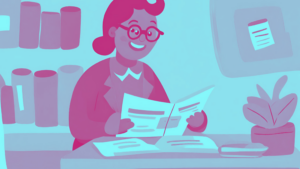The first Twitter in Irish Primary Schools experiment was a success. With 120 tweets and 21 users contributing over the week, there was plenty of scope for learning. For those of you who missed the previous two articles, the first Twitter experiment focussed on the primary Geography curriculum where schools were asked to talk about their local area. Ten counties were represented and plenty of discussion was generated.
So what did I learn from the experiment? The very first concern that was raised was about children’s security. Who would have access? Who could have access? How could we prevent undesirable tweets from being included? The truthful answer was that it was impossible to manage this. If anyone discovered our hashtag, they potentially could post anything to the discussion. For example, a tweet saying “#twexp1 Buy this product on…”, would appear in the experiment. Over the week, I was thinking of a way we could manage this if we tried the experiment again. The solution, I believe, is to create lists. If we created a list of primary school users, we could ensure that only tweets from selected accounts could be viewed. It would also rid the need for a #hashtag.
On a more pedagogical level, I learned that Twitter can help in the primary school curriculum. Of the 120 tweets that were posted, many of them revealed interesting geographical information about the contributing schools. The first (and most obvious) thing for me to do as a teacher would be to find the schools on a map of Ireland or perhaps to create a Google Map with the corresponding schools. We can look at the natural features around the area and ask these schools for more information as the project continues. There’s nothing like local knowledge!
Some schools revealed famous past pupils – again a very interesting way of beginning projects. We also got lots of current news from schools, for example, awards that they had won or sports that they played. One conversation, which captured some schools was whether there was a beach near their school. I think the Portmarnock school won the “closest to a beach” contest!
We could continue the experiment using the same topic for the rest of the month if we wanted. There was real learning going on and the children loved it! My own students got to see live updates on my iPad, which I brought in for the week. There was great excitement when a new tweet revealed itself or even better if a question they asked was answered. For whatever reason, a couple of students in my class were fascinated as to whether other schools had swimming pools in their town!
I guess the next question is where do we go from here? I’d like to try out another subject for a week. I’d also like to be a little bit more daring and see what happens. I don’t want to exclude schools either so I’m going to try and make it as loose and open as possible. The subject I want to try out is Visual Arts. I’ll write a separate article explaining how schools can join in Part 2 of this Twitter experiment.
This project will be the last one before we break up for the summer. I hope to continue this project in the 2010-11 academic year. I would like to pursue the idea of adding in an international dimension. I’d like to see primary schools in other countries tweeting with us. Also, it would be great to get tweeters from businesses or other fields of work to tweet with primary school children too. Hopefully we can build on week one’s success!


0 Responses
There is one thing: legal age to use Twitter is 13 years old. Did you considered this barrier? I teach to prospective teachers and I had to deal with that issue.
Sincerely,
Stephane
Thanks for pointing this out Stephanie. It wasn’t something that I was aware of. We don’t give pupils in our school individual Twitter accounts. Our school’s account is manned by the teacher and children can update the statuses of the school.